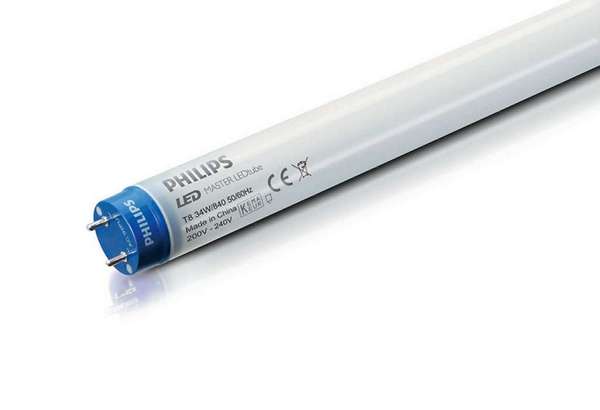Recently, at an event in Hangzhou, China, Philips announced its future LED tube prices in China will match Chinese rivals Foshan Lighting products or might even be priced lower than MLS, reported Chinese-media Dazhaoming.
Many LED industry insiders offered different opinions on this subject, some said this was possible, others thought it would be impossible.
Will “high-class” Philips really be able to stoop down into Chinese market’s raging “price wars”? How can Philips lower its prices? And what are some of the pros and cons from this strategy?
 |
|
Philips might be pricing its LED tube lights, such as this Phlips LED T8 Master Tube Lights at lower prices in China to compete with local rivals. (Philips/LEDinside) |
Philips is taking huge risks with low pricing strategies—Micheng Wang, General Manager, Honyar Electrical
Philips and other international lighting manufacturers have been impacted by China’s malignant market competition, and have been adjusting their brand position to give the LED industry the impression that it is lowering prices and becoming increasingly “Chinese,” said Wang.
In addition, Philips lighting has very good distribution resources in China, and large sales volumes, which makes lowering prices a possibility. However, would Philips be able to maintain its brand image among consumers if it implements low price strategies? Perhaps market rumors are true that the company will be selling its lighting business? There is a lot of market speculations, added Wang.
Philips “low pricing strategy” to backfire-Yueming Chen, General Manager, Large Strategic Operations, Felio Acoustics
Developments in the lighting industry has evolved in four phases: ver. 1.0 Products and Sales, ver. 2.0 integration and experience, ver. 3.0 finances and acquisition, and lver. 4.0: finances, intelligent lighting, and management, said Chen. To sum up, ver. 1.0-4.0 has been the gradual transformation from traditional manufacturing and sales model to smart lighting and finances to form the Internet of Things (IOT) era. The marketing era has been “IOT+” and “LED+” era. Low pricing and low costs have not been the only industry development solution and marketing model.
Philips Lighting has lost its advantages in the Chinese market of “having the capacity to make lower priced products,” this is really a helpless act. If this rumor is true, than it indicates Philips Lighting’s market strategy in China has become unclear, and its market position is problematic.
Philips Lighting is an important role model in the lighting industry, it should not be jumping into low pricing and low cost market strategies. The company should invest more in innovation, marketing models, and lead the lighting industry forward with its core growth momentums. Philips Lighting’s management has wrongly judged the market situation and the low price policy will move the company further away from the market. It will also tarnish Philips Lighting brand image and weaken its sales capacity. The strategy will completely backfire, said Chen.
Related articles:












